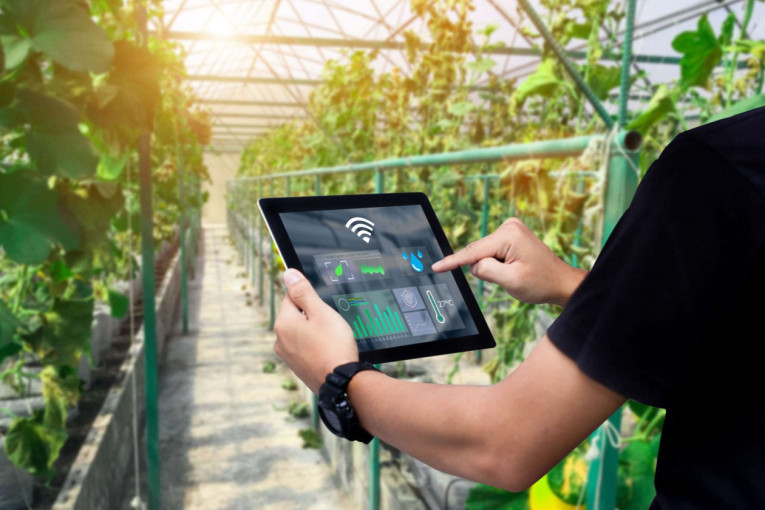
The recent accolade bestowed upon Indonesia by the International Rice Research Institute (IRRI) for its Robust and Self-Sufficient Rice Farming System for 2019-2021 is more than a commendation; it calls the nation’s farmers to rise to the occasion.
Dr. Bayu Dwi Apri Nugroho, an astute agricultural observer specializing in agroclimatology and climate change, underscores the weighty responsibilities now resting on Indonesian farmers’ shoulders.
The prestigious award, handed over by IRRI Director General Jean Balie to President Joko Widodo on Aug. 14, 2022, recognizes Indonesia’s innovative use of rice technology.
However, Dr. Nugroho is quick to bring attention to the array of challenges these farmers face, including rapid land use conversion, fluctuating harvest prices, unpredictable dynamic weather due to climate change, and the surge in fuel prices.
“An issue that may not be unique to Indonesia but experienced by almost all countries is related to farmer regeneration,” Dr. Nugroho commented at the UGM Campus on Wednesday (Jan. 10).
Statistics Indonesia (BPS) data reveals that, as of 2019, the total number of farmers in Indonesia stood at 33.4 million individuals. Shockingly, only 8 percent of this number belonged to the young farming demographic aged 20-39, accounting for 2.7 million individuals.
In stark contrast, a staggering 91 percent, roughly 30.4 million people, were over 40 years old, with the majority approaching 50-60 years.
A dwindling number of young farmer regenerations further compounds this demographic challenge. The data for the 2017 to 2018 period indicates a decline of 415,789 young farmers, prompting President Jokowi to encourage the younger generation to step into agriculture.
The president underscores the pivotal role of farmer regeneration in upholding food security in Indonesia. Dr. Nugroho envisions a flourishing agriculture sector with the infusion of young minds deemed promising for their progressive perspectives.
To attract the interest of the youth in agriculture, Dr. Nugroho proposes introducing agricultural technology from an early age, not just for those from farming families but for everyone.
“Take, for example, the utilization of drones. While commonly associated with photography, drones can serve a dual purpose—monitoring crop conditions and facilitating tasks like fertilizing and pesticide spraying in rice fields,” Dr. Nugroho said.
The advent of agricultural applications on smartphones is reshaping the landscape. Through smartphones, the younger generation can easily track agrarian product prices, engage in discussions on agricultural matters, and monitor land conditions in real time.
According to him, smartphones should not be confined to social media apps but should be harnessed as part of the solution. Beyond sensors and drones, he emphasizes the importance of additional features in agricultural applications that support smart agriculture.
“Chatbots and voice commands, for instance, can serve as communication tools for farmers seeking information about agriculture. Furthermore, the integration of robots for automation in planting and harvesting, despite the current high costs, is deemed crucial for the future of smart agriculture,” he said.
While innovation and technology have started to kindle young people’s interest in agriculture, Dr. Nugroho believes that introducing agriculture, including technology, as early as possible is imperative.
Education is a vehicle for this transformation, advocating for including agriculture and agricultural technology subjects in the elementary, junior high, and high school curricula.
However, he emphasizes the need for support from central and local governments, including establishing agrotourism and agroedutechnopark buildings across regions.
The development of agrotourism and agroedutechnopark, Dr. Nugroho highlights, holds significant benefits. Beyond recreational spaces, these areas can serve as platforms to introduce agriculture and its technology.
“Elementary, junior high, and high school students are programmed and scheduled to visit these spaces,” he added.
By dispelling the misconceptions surrounding agriculture—commonly viewed as old, conventional, dirty, and unprofitable—early exposure to agriculture and its technology can shape a new narrative.
Dr. Nugroho concludes optimistically, “I think by introducing agriculture and its technology as early as possible at the elementary, junior high, and high school levels, there is hope that Indonesia can be free from the shadow of imports in the future and, if possible, become a food-exporting country, which will certainly improve the welfare of farmers in Indonesia.”
Author: Agung Nugroho
Image: Agri Sustineri

